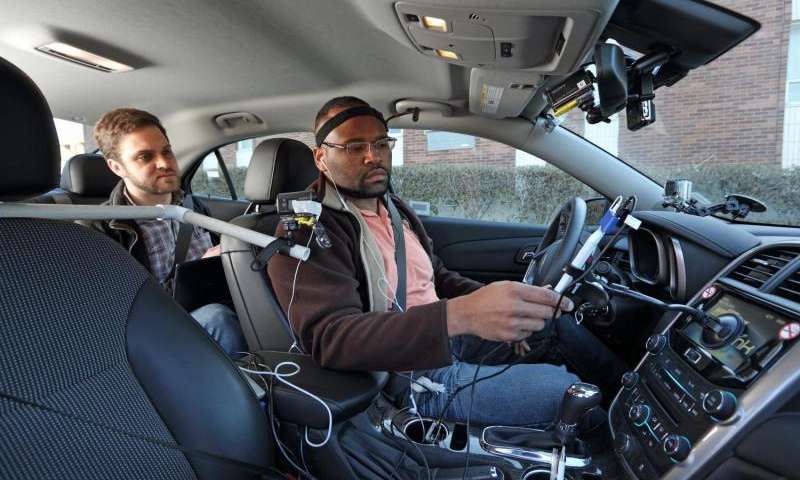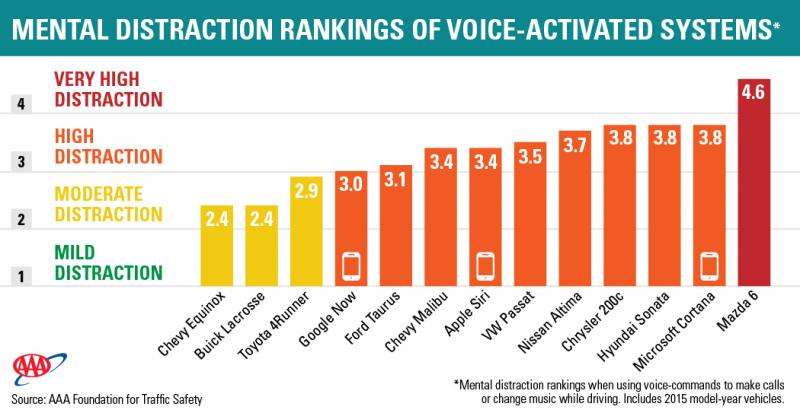
devices designed to gauge mental distraction during road tests. Credit: AAA Foundation for Traffic Safety
So you only text when stopped at traffic lights, thinking if you are stopped, it has to be safe. You text and then before the light turns green you stop texting. As long as you are looking at the road and not at your phone when you begin to move it has to be safe, right? According to researchers at the University of Utah the answer is an unequivocal “no.”
Lead researcher David Strayer summed up the results of one of the studies as follows:
“Most people think, ‘I hang up and I’m good to go,'” Strayer says. “But that’s just not the case. We see it takes a surprisingly long time to come back to full attention. Even sending a short text message can cause almost another 30 seconds of impaired attention.”
Another study looked at whether it was distracting to use hands-free voice commands on our smart phones to dial numbers , change music and send texts with Apple Siri, Microsoft Cortana and Google Now . Each was found to be highly distracting to drivers.
The third study examined voice-dialing, voice-contact calling and music selection using in-vehicle information or “infotainment” systems in 10 model-year 2 15 vehicles. Three were rated as moderately distracting, six as highly distracting and the system in the 2015 Mazda 6 as very highly distracting.
Dr Strayer concluded :
“Just because these systems are in the car doesn’t mean it’s a good idea to use them while you are driving,” says University of Utah psychology professor David Strayer, senior author of the two new studies. “They are very distracting, very error prone and very frustrating to use. Far too many people are dying because of distraction on the roadway, and putting another source of distraction at the fingertips of drivers is not a good idea. It’s better not to use them when you are driving.”





